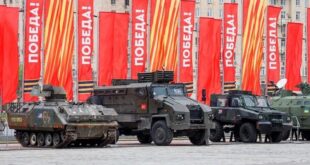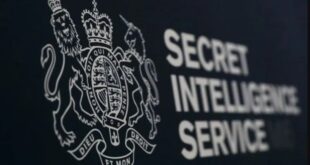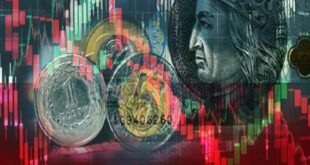Tehran’s diplomatic persistence has yielded a second major breakthrough this year: Securing full BRICS membership to dismantle isolation, navigate sanctions, and bolster political and economic influence with Eurasian power centers.
In his address at the 15th BRICS summit in Johannesburg on 24 August, Iran’s President Ebrahim Raisi highlighted his country’s unwavering commitment to the ongoing de-dollarization drive and the establishment of a more balanced international order.
Raisi underscored the “historic” advantages that Iran’s inclusion in the economic bloc brings, noting that it marks “a new step towards establishing justice, ethics, and sustainable peace in the world,” and called the 11-member BRICS a “symbol of change.”
His address followed the bloc’s invitations to Iran and five other countries — Saudi Arabia, Egypt, Argentina, Ethiopia, and the UAE — to join as permanent members. The expansion of the group into BRICS+ has irked western hawks, as it threatens to counterbalance their global influence.
On the sidelines of the three-day summit, Raisi also held separate meetings with his counterparts from founding members China, Brazil, India, and South Africa. The leitmotif was common — a new world order.
“The expansion of BRICS shows unilateralism is going downhill,” Raisi was quoted as saying in a meeting with Chinese President Xi Jinping in which he vowed to strengthen Tehran’s comprehensive strategic partnership with Beijing and promote the latter’s ambitious Belt and Road Initiative (BRI).
In his meeting with Brazilian President Luiz Lula da Silva, Raisi explained that the US’ “maximum pressure” policy — the brainchild of former President Donald Trump – has inadvertently propelled Iran’s progress.
With Indian Prime Minister Narendra Modi, Raisi focused on transit matters and urged expedited progress on the International North-South Transport Corridor (INSTC) project, a transformative multi-modal transportation route linking India with the Caspian Sea, Russia, and northern Europe through Iran.
‘Strategic victory’ for Iran
Mohammad Jamshidi, the Iranian president’s deputy chief of staff for political affairs and a key aide, first announced Iran’s BRICS induction on Twitter.
“In a historic move, Islamic Republic of Iran becomes permanent member of BRICS,” Jamshidi tweeted in both English and Persian, describing it as a “strategic victory for Iran’s foreign policy.”
On Friday, the Iranian delegation made a triumphant return to Tehran, having clinched the BRICS membership barely a month after full accession to the prestigious 9-member Shanghai Cooperation Organization (SCO).
Speaking to reporters and his cabinet colleagues at Mehrabad International Airport, Raisi said Iran’s inclusion in the BRICS alliance will enhance the country’s “political and economic power.”
Foreign Minister Hossein Amir-Abdollahian took to Instagram to celebrate the diplomatic feat, saying the BRICS expansion and Iran’s admission would “strengthen multilateralism” and help the Raisi government pursue its “look east” foreign policy goals.
Morteza Habibolahi, a Tehran-based economic affairs analyst, describes Iran’s full memberships in both the SCO and BRICS in a span of one year as nothing short of a “diplomatic masterstroke.” He tells The Cradle:
“The SCO primarily focuses on political and security issues while BRICS is a bloc of emerging market economies with almost 30 percent share of global GDP. For Iran, battered by sanctions and economic isolation, it presents tremendous opportunities to open up again.”
Iran submitted its application for full membership in BRICS in June last year, days after Raisi virtually addressed the BRICS summit and expressed Tehran’s readiness to share its “vast capabilities and potentials” to help the bloc accomplish its goals.
A week later, at the end of the 23rd summit of the SCO Council of Heads of States, the New Delhi Declaration admitted Iran as the 9th full member state.
‘Turning east’ has been a winning strategy
Former Iranian diplomat Mohsen Pakaeen explains to The Cradle that BRICS membership is the outcome of Iran’s assertive ‘look-east’ policy.
He contends that Iran can “reap many benefits” through its membership in the bloc that “aims to promote a new world order based on multilateralism and focuses on an alternative financial system.”
“Iran lies at the heart of BRICS as it is situated at the crossroads of Europe, Asia and Africa. It owns vast oil and gas resources and numerous mines. It also has a robust defense system, seeks to protect regional security, and is against foreign interference in the region’s affairs. All of these can help the BRICS alliance thrive.”
According to Pakaeen, Iran’s membership in BRICS and the SCO will “eliminate the need for the country to wait for the [western] sanctions-removal talks to bear fruit,” referring to the stalled negotiations aimed at reviving the Joint Comprehensive Plan of Action (JCPOA), commonly known as the Iran nuclear deal.
While those negotiations in Vienna, mediated by the EU, have been at a standstill since last August due to disputes between Iran and the US, Iran’s involvement in influential Global South economic blocs has provided an alternative path to economic progress.
The stalled negotiations are compounded by Iran’s conflicts with the UN nuclear watchdog, tensions in the Persian Gulf, and allegations that Iran is supplying drones to Russia for use in Ukraine.
Earlier this month, the two adversaries reached a prisoner swap deal, which also included unfreezing of Iranian assets blocked in Iraq and South Korea, but the deal has been de-linked from nuclear talks, which Tehran insists is contingent on Washington’s political will.
An Iranian foreign ministry official, speaking on condition of anonymity, informs The Cradle:
“Raisi’s administration’s ‘look-east’ policy is essentially designed to tell the US and its allies that we can not only survive but also thrive by focusing on our strengths and relying on friends. This administration understands that trusting Americans never works but the door of meaningful and pragmatic diplomacy also remains open.”
Tensions in the Persian Gulf
Ali Ahmadi, an executive fellow at the Geneva Centre for Security Policy, believes that Iran joining BRICS right after joining the SCO shows that US efforts to isolate Iran have “significant limits.”
Ahmadi tells The Cradle that sanctions are “still harming the Iranian economy” and that de-dollarization is a “long-term project that isn’t going to break the impact of American financial sanctions in the immediate term.”
“This certainly shouldn’t be seen as any kind of replacement for nuclear diplomacy. I do not believe officials in Tehran see it that way. It’s much more about managing Iran’s position in a multipolar emerging global order.”
Significantly, Iran’s entrance into BRICS comes against the backdrop of escalating tensions between Tehran and Washington due to recent incidents in the Persian Gulf and the deployment of US warships in the geostrategic waterway.
Reports have emerged about the US Navy offloading a seized Iranian oil tanker off the coast of Texas, despite repeated warnings from Iranian officials. Following this incident, Iran’s Foreign Ministry Spokesman Nasser Kanaani boldly declared that the “era of hit and run is over,” echoing the stern warning issued in July by Islamic Revolutionary Guards Corp (IRGC) Navy commander Alireza Tangsiri – and a clear message to Washington.
Iran’s economic potential in BRICS
Abolfazl Amoee, spokesperson for the Iranian parliament’s national security and foreign policy commission, believes Iran’s accession to the BRICS benefits all parties, boosting both Iran and the multilateral organization’s influence in the international arena. As he tells The Cradle:
“Before the latest expansion, BRICS economies accounted for around 26 percent of global GDP. With the inclusion of six new members, they will now account for 37 percent of the world’s GDP.”
Amoee argues that Iran is a “largely untapped market” for global economic powers such as China, Russia, and India, which means there will be great room for closer trade between Iran and BRICS countries:
“Iran is a big 85-million market with a massive educated human capital. Despite the illegal US sanctions, last year the volume of our non-oil trade reached $112 billion. We can be a good partner in the value chain for other BRICS members.”
Non-oil trade between Iran and the five original BRICS members grew by 14 percent to $38.43 billion in 2022-23, as per data from the Islamic Republic of Iran’s Customs Administration.
China was Iran’s biggest trade partner with $30.32 billion, followed by India with $4.99 billion, Russia with $2.32 billion, Brazil with $466.55 million, and South Africa with $322.04 million.
As the second largest oil and gas producer in West Asia, a major emerging hub for transit transportation, and arguably the most experienced country in circumventing western sanctions, Iran can add tremendous value to the bloc and its members.
Banking on BRICS
At a conference attended by BRICS representatives in Tehran earlier in August, Iran’s Foreign Minister Hossein Amir-Abdollahian made that point clearly, by emphasizing his country’s potential as a “reliable and influential” partner of the bloc.
He highlighted Iran’s strategic location, oil and gas reserves, well-developed transportation and transit networks, and advancements in modern technology as key strengths that can benefit all BRICS members.
The Islamic Republic also stands to gain from joining the nascent BRICS financial system. Mehdi Safari, Iran’s deputy foreign minister for economic affairs, last week announced that Dilma Rousseff, president of the New Development Bank (NDB), is slated to visit Tehran soon.
Safari held talks with Rousseff on the sidelines of the BRICS summit in Johannesburg, during which the two sides discussed Iran’s application to join the bank, widely lauded as a credible replacement for the Belgium-based SWIFT.
Amoee tells The Cradle that the BRICS policy of pursuing non-dollar trade and its plan to create a joint investment bank creates opportunities for countries to engage in economic cooperation, independent of the US:
“Iran is one of the countries that can greatly benefit from this policy, as the US spares no chance to curb Iran’s dollar-based trade.”
Ahmadi, for his part, stresses that Iran is naturally more aligned with China and Russia, who share “negative views” on western policies:
“BRICS is trying to build a diverse set of economies and seems to particularly like commodity-exporting nations that can facilitate a strong inter-BRICS trade network focused on de-dollarization.”
In short, Iran’s dual memberships in BRICS and the SCO have a ‘multiplier’ effect on Iran’s strategic goals of promoting de-dollarization, strengthening ties with like-minded rising powers, and advancing its longstanding national commitment to self-reliance and diversification.
These partnerships not only challenge western attempts to isolate Iran and its economy, but also position Tehran as a key player in shaping emerging geopolitical and economic dynamics. The BRICS knows full well that Iran has unparalleled experience in forging new paradigms outside the west’s ecosystems, and those lessons and tactics will come in handy as they advance a multipolar world order.
 Eurasia Press & News
Eurasia Press & News




